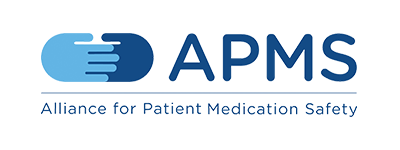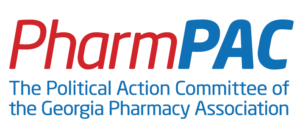Become an Opioid Safety Champion
Be a recognized leader — a pharmacist champion committed to fighting the opioid crisis.
Your goal: Learn, practice, and implement solutions to the opioid crisis in Georgia, and cut down on the misuse of opioids in your community.
When you complete the program, you’ll be recognized as a Foundations of Opioid Safety Champion!
Champions will automatically be part of the Foundation’s Champions Network with access to resources and communications. You will be featured in GPhA media and communications, recognized at convention, and promoted in your local media as part of the solution.
 Who is eligible?
Who is eligible?
Any practicing pharmacist in the state of Georgia can become an Opioid Safety Champion by meeting three criteria:
1: Completion of select opioid-related education programming in five subjects:
- Opioid Pharmacology, Risks and the Opioid Crisis
- Opioid Guidelines, Quality Measures, and Laws
- Communicating with Patients and Prescribers about Opioid Risk
- Alternatives to Opioids
- Naloxone
2: Demonstrating adoption and utilization of the state standing order for naloxone
3: Demonstrating acceptance of patient-centered, opioid best practices at your pharmacy practice
Meeting the requirements
CRITERIA 1: Complete select opioid-related education
You must complete at least one CE courses in each of these five subjects. The courses listed in each qualify, but you can also meet the requirements by submitting proof of completion for a similar course at the foundation’s discretion.
Subject 1: Opioid Pharmacology, Risks, and the Opioid Crisis
- Recognizing and Treating Opioid Use Disorder (2019 Georgia Pharmacy Convention)
- The PharmAssist Story (2019 Georgia Pharmacy Convention)
- Addressing the Opioid Epidemic: Recommendations from CDC (CDC)
- Assessing and Addressing Opioid Use Disorder
- Pathways to Safer Opioid Use (HHS)
- Reducing Benzodiazepine Use in Older Adults (2019 Convention)
- SCOPE of Pain: Module 1 (Boston University)
- Balancing Risk and Access to Opioids: The Role of the Pharmacist (APHA)
- Reducing the Risks of Opioids (CDC)
Subject 2: Opioid Guidelines, Quality Measures, and Laws
- Reducing Benzodiazepine Use in Older Adults (2019 Convention)
- Regulatory Update – Dispensing Controlled Substances and Preventing Diversion (2019 Convention)
- Implementing CDC’s Opioid Prescribing Guideline into Clinical Practice (CDC)
- Reducing the Risks of Opioids (CDC)
- Determining Whether to Initiate Opioids for Chronic Pain (CDC)
- Opioid Use and Pregnancy (CDC)
- Balancing Risk and Access to Opioids: The Role of the Pharmacist (APHA – fee)
- Controlled Substance Education for Prescribers and Pharmacists (UGA – 3hr – fee)*
Subject 3: Communicating with Patients and Prescribers about Opioid Risk
- Collaborate for Safer Opioid Use (APHA – fee)
- Pathways to Safer Opioid Use (health.gov)
- SCOPE of Pain: Module 2 (Boston University)
- Opioid Overdose Education and Naloxone Distribution (OEND) Training (CDC)
Subject 4: Alternatives to Opioids
Subject 5: Naloxone
CRITERIA 2: Adopt and use the state standing order for naloxone
You must attest or demonstrate that at your practice site:
- A copy of the standing order is posted (required)
- Naloxone is stocked (required)
- The pharmacy has dispensed three or more doses of naloxone in the past three months or six doses in the past six months (required)*
- The pharmacy staff has completed briefings/education/training on opioid risks and naloxone in the past year
- The pharmacy shares with patients printed or video education materials on opioid risks and naloxone
*Pharmacists not meeting this element may petition for approval by providing more information on activity to promote and provide naloxone in the community
CRITERIA 3: Establish opioid safety best practices at practice site
Met by attesting to the pharmacist’s practice site implementing opioid safety best practices including all required process elements and at least one element in each of the following categories:
Process (required)
Click here to learn how!
- CDC Guideline for Prescribing Opioids for Chronic Pain
- CDC Opioid Guidelines at Glance
- Allied Against Opioid Abuse Promoting Naloxone Toolkit
- Naloxone Quick Reference – Guide
- (Staff Training) Interactive Video: Pathways to Safer Opioid Use
- – Pain, Enjoyment and General Activity (PEG) Scale
- – Opioid Risk Tool
- Follow a process to review PDMP before dispensing any or specific opioid prescriptions (required)
- Follow a process to screen for opioid risk to prompt counseling by the pharmacist (required)
- Follow a process to identify candidates for naloxone and prompt a recommendation by the pharmacist (required)
Patient Engagement (at least one)
Click here to learn how!
- Posts a visible opioid policy or rules for accepting, reviewing, and/or dispensing opioids
- Prominently feature opioid safety and/or naloxone signage, posters, messaging or educational resources/materials
Safe Storage and Disposal (at least one)
Click here to learn how!
- Promote safe opioid storage (prominently display lock-boxes/security-solutions or distribute educational materials)
- Promote safe opioid disposal (On-site drop-box, prominently display disposal solutions, or participate in bi-annual takeback events)
Community Coordination (at least one)
Click here to learn how!
- Maintain a local contact list to refer patients for help with mental health and substance use concerns
- Participate at least quarterly in local opioid safety events or advocacy
Can Georgia count on you? Are you ready to become an Opioid Safety Champion™? Have you already met the requirements? Let us know!
Get in touch at opioidssafety@gpha.org.
Complete your Opioid Safety Attestation (click here).












